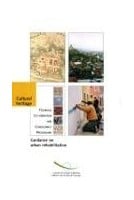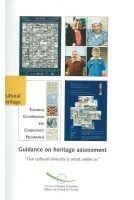As part of the Institutional Capacity Building Plan, which is the first of the three components of the Regional Programme for Cultural and Natural Heritage in South-East Europe launched in 2003, the first stage of a "transnational theme-based debate" was organised following an assessment of requests from the countries/regions participating in the regional programme: Albania, Bosnia and Herzegovina, Bulgaria, Croatia, Kosovo/UNMIK, Montenegro, Romania, Serbia and "the former Yugoslav Republic of Macedonia".It was concerned with current heritage policies and legislation and aimed to take stock of the current position in the countries of South-East Europe. It also highlighted the need to undertake an in-depth analysis of certain key areas where difficulties still arise with regard to implementation.
Foreward
Introduction
Part 1 - State of cultural heritage policies in South-East Europe
1.Albania
2. Bosnia and Herzegovina
3. Bulgaria
4. Croatia
5. Kosovo (UNMIK)
6. Montenegro
7. Romania
8. Serbia
9. "The former Yugoslav Republic of Macedonia"
10. Comparative summary
Part 2 - Eight themes and corresponding debates
Theme 1: Purpose of law, harmonisation of terms, categorisation of protected items and the link to inventories/registers
Theme 2: Integrated conservation systems
Theme 3: Institutional reform - a new role for private owners and enterprises and their professional advisers
Theme 4: Financial and other incentives, sanctions and coercive measures
Theme 5: The living heritage: a sustainable approach
Theme 6: Classification of museums and the status of collections
Theme 7: The circulation and restitution of cultural goods
Theme 8: Archaeological sites and research
Part 3 - Operational conclusions and key issues
1. Coherence and clarity in legal language, guidance and advice
2. Methodologies for selection, categorisation, identification and valorisation
3. Linking the cultural and natural heritage
4. CuItural impact assessment
5. Integrated conservation and sustainable development
6. Funding mechanisms
7. Institutional reform and partnership with the private sector
8. Sanctions and enforcement measures
9. Museums and the movable heritage
Part 4 - The next stage
1. The use of digital information systems
2. Cultural landscapes
3. Integrated conservation systems
4. Financial policy and funding measures
5. Sustainable development
6. Human resources and institutional reform










